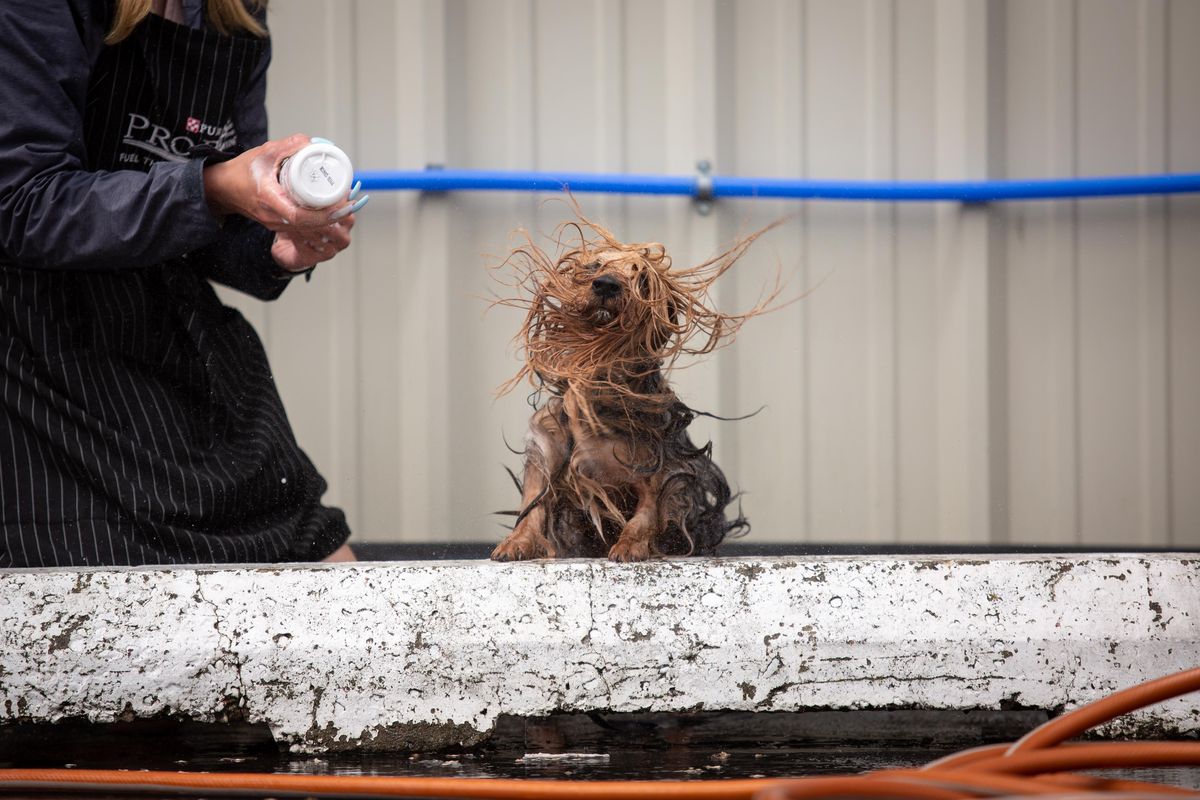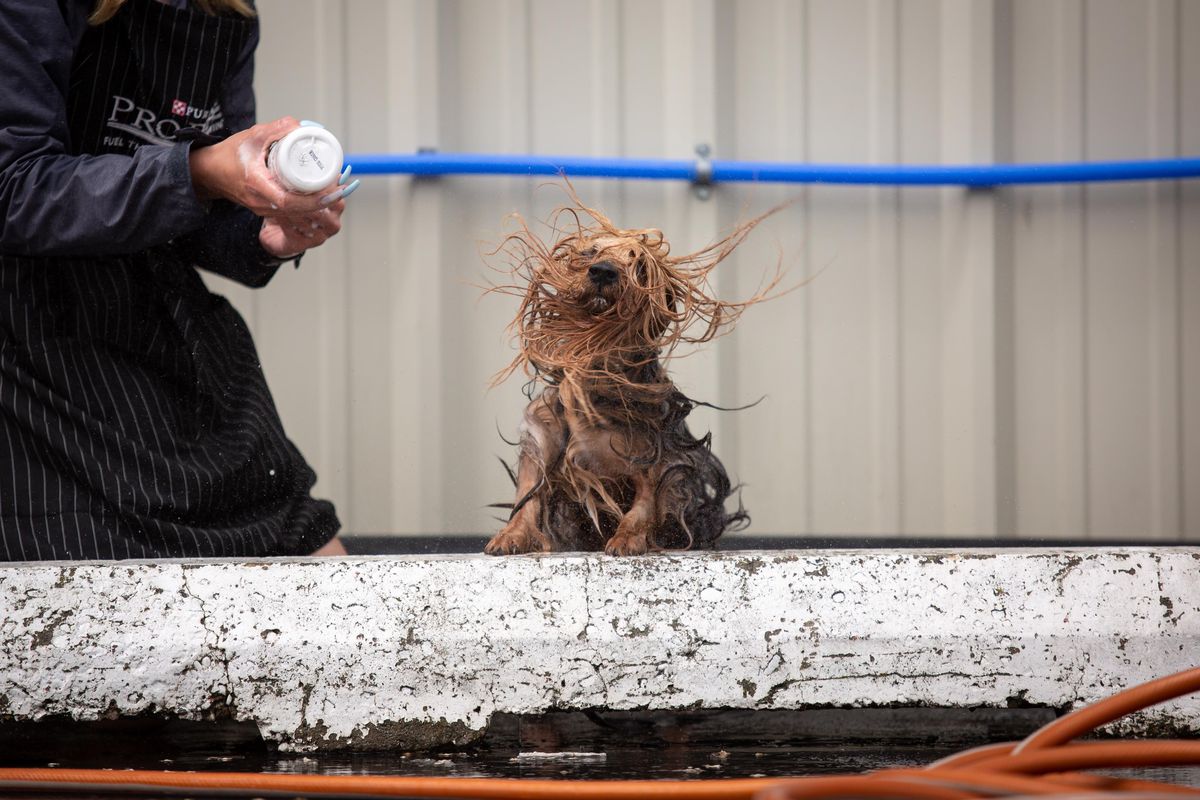Stakes are high as dogs compete for best in show

Arlie Adam, a self-described dog show junkie from Portland, watched her 20-month-old pointer, Lusty, from across the room. Adam has shown dogs for decades, but due to back issues, now lets a professional handler lead her dog across the ring.
Adam said Lusty’s breed is the symbol of the Westminster Dog Show, the second-oldest sporting event in the United States. While Lusty glided around the ring, held perfectly still while the judges inspected her and obediently followed her handler, she didn’t make it to the top seven.
Adam however, still pets and praises her dog when she returned from the ring.
Lusty was among more than 900 dogs gathered at the Spokane County Fair and Expo Center over Memorial Day Weekend to compete to be the best of their breed, or the coveted best of show awards for the Spokane Kennel Club Dog Show.
Handlers from across the country showed poodles, bulldogs, chows, pugs, sheepdogs and even a Dalmatian. The winning dog, a papillon, also known as a butterfly dog, is from Louisiana; its handler, Brian Livingston, hails from Dallas.

Livingston said the papillon, named Treasure, is the top in her breed in the nation.
The reserve best in show champion was an American Eskimo named Oh No She Didn’t. Randy Benns, the American Eskimo dog’s handler, said the dog’s sister is named Oh Yes She Did.
Benns, who is from Vancouver, Washington, has been in the dog show business for over 30 years.
In addition to showing an American Eskimo, Benns showed a French bulldog, a Rottweiler and a Samoyed over the weekend. He said showing a dog is a lot like dancing – the performance won’t go well if one partner drags the other around. To show a dog well, the handler and the animal have to work as a team and the handler needs to listen.
“The dog is not working for you, it’s working with you,” he said.
Benns said many dog owners do show their own dogs and are successful, but many champions are shown by professional handlers because their owners may not have the time, training or temperament to show dogs.
“Some people understand medicine, but they can’t do surgery,” he said.
Adam, a retired audiologist, said her current dog has been named best of breed at other shows. The pointer, which has a short satin coat and a delicate slim build, is one of the easier-to-groom dogs in the show, and one of the shorter-haired dogs Adam has owned over the years.
She said many of the dogs with complicated grooming routines, like poodles, have a practical history that explains their grooming. Poodles, she said, used to assist fishermen with their nets and the areas that are not shaved are designed to protect their joints and internal organs. Now grooming requirements and traditions are mostly for show.
Adam also owns a saluki. In the past, she has also owned a Doberman, whippets and a pumi, a breed far fluffier than her current show dog.
Many dogs in the show were handled by Kevin and Diane Chestnut, of Moses Lake, who have also been in the dog show business for decades. The Chestnuts showed the only Dalmatian in the show, and Adam’s pointer.
The Dalmatian that Diane Chestnut showed, which was named Grif and from the Snohomish County area, had one black-spotted eye, and a spot above the other that looked similar to an eyebrow.
She said most handlers only take on dogs that they think have champion potential, or are an exemplary specimen of their breed.
“You don’t just take a dog to a show because you want the money,” she said. “You take a dog because it might be a champion.”